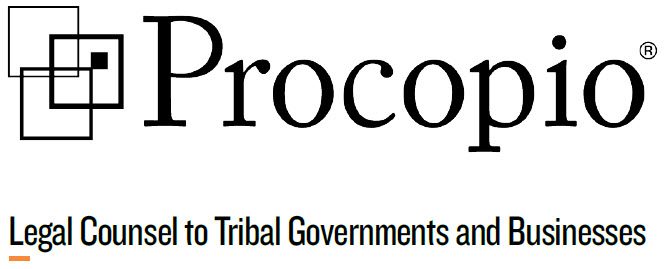By Heather Torres | Intern | heather.torres@procopio.com
Over the past weekend, many celebrated the 240th birthday of the United States with fireworks, food, and flying the nation’s flag. Red, white, and blue stars and stripes found on everything from cupcakes to clothing. We see similar celebrations around high school graduation time; families blasting airhorns at commencement, throwing parties, decorating homes and cars in school colors, all to honor the accomplishments of young scholars. However, a particular way of celebrating seems to cause a stir every year: Native graduates wearing tribal regalia.
This year’s graduation season was littered with stories of public school districts banning Native American students from wearing regalia and beaded caps during graduation ceremonies. At least four incidents were reported on various media platforms. (1, 2, 3, 4) The students planned on wearing graduation caps beaded by their family members and traditional regalia to celebrate their accomplishment, to honor their ancestors, and to be a role model for other Native students. Role models and the visibility of their accomplishments are vital to efforts to reverse historically low graduation rates for Native students.
School policies implicated in these incidents are aimed at some general goals. Those goals include safeguarding uniformity, preserving the sanctity of the ceremony, and upholding formality. Often, once a dialogue occurs between the school and the student, school officials agree to accommodate a student’s request, particularly because the school leadership recognizes the spiritual and religious significance of the regalia. However, when an agreement is not reached, students face fines, not participating in commencement, and not receiving their diploma.
An individualized process could be applied to all student requests, allowing schools to practice informed discretion when considering requests from students. In past advocacy efforts, organizations like the Native American Rights Fund (NARF) point out the parallels between school sponsored honor chords and wearing an eagle feather on a graduation cap. Both symbolize outstanding achievement and represent a well-deserved honor. NARF has also created brochures for students on how to approach their school’s administration with a request and for schools to better understand the cultural and religious significance of eagle feathers.
Looking at images of students in public school districts like the Nebo School District in Utah, which graduated 100% of its Native seniors this year, the sanctity and formality school district’s seek is beautifully embodied in tribal regalia. If anything, a student’s regalia honors the sacredness of the ceremony and elevates the accomplishment beyond the individual student to their Tribal Nation(s). Arguments around uniformity, formality, and dignity harken back to the federal government’s assimilationist policies, most notably exercised in Indian boarding schools. School districts recycle assimilationist values in their graduation attire policies by viewing tribal regalia as informal, inappropriate, and undignified.
Current restrictive school district policies have damaging and discriminatory effects on Native students, their families, and Tribal Nations. With the resources made readily available by organizations like NARF, students and families raising this issue every year, and the recent rise in media coverage, school districts should use the information available to critically review their policies and take corrective measures.
Heather Torres (San Ildefonso Pueblo, Navajo) is a rising 3L enrolled in the Critical Race Studies specialization at the University of California, Los Angeles School of Law. Heather is an Executive Editor for the Indigenous Peoples’ Journal of Law, Culture & Resistance at UCLA. She is a recipient of the 2016 Procopio Native American Internship.
 Ted is head of the Native American Law practice group and primary editor for the Blogging Circle. Connect with Ted at ted.griswold@procopio.com and 619.515.3277.
Ted is head of the Native American Law practice group and primary editor for the Blogging Circle. Connect with Ted at ted.griswold@procopio.com and 619.515.3277.

 Ted is head of the Native American Law practice group and primary editor for the Blogging Circle. Connect with Ted at ted.griswold@procopio.com and 619.515.3277.
Ted is head of the Native American Law practice group and primary editor for the Blogging Circle. Connect with Ted at ted.griswold@procopio.com and 619.515.3277.
